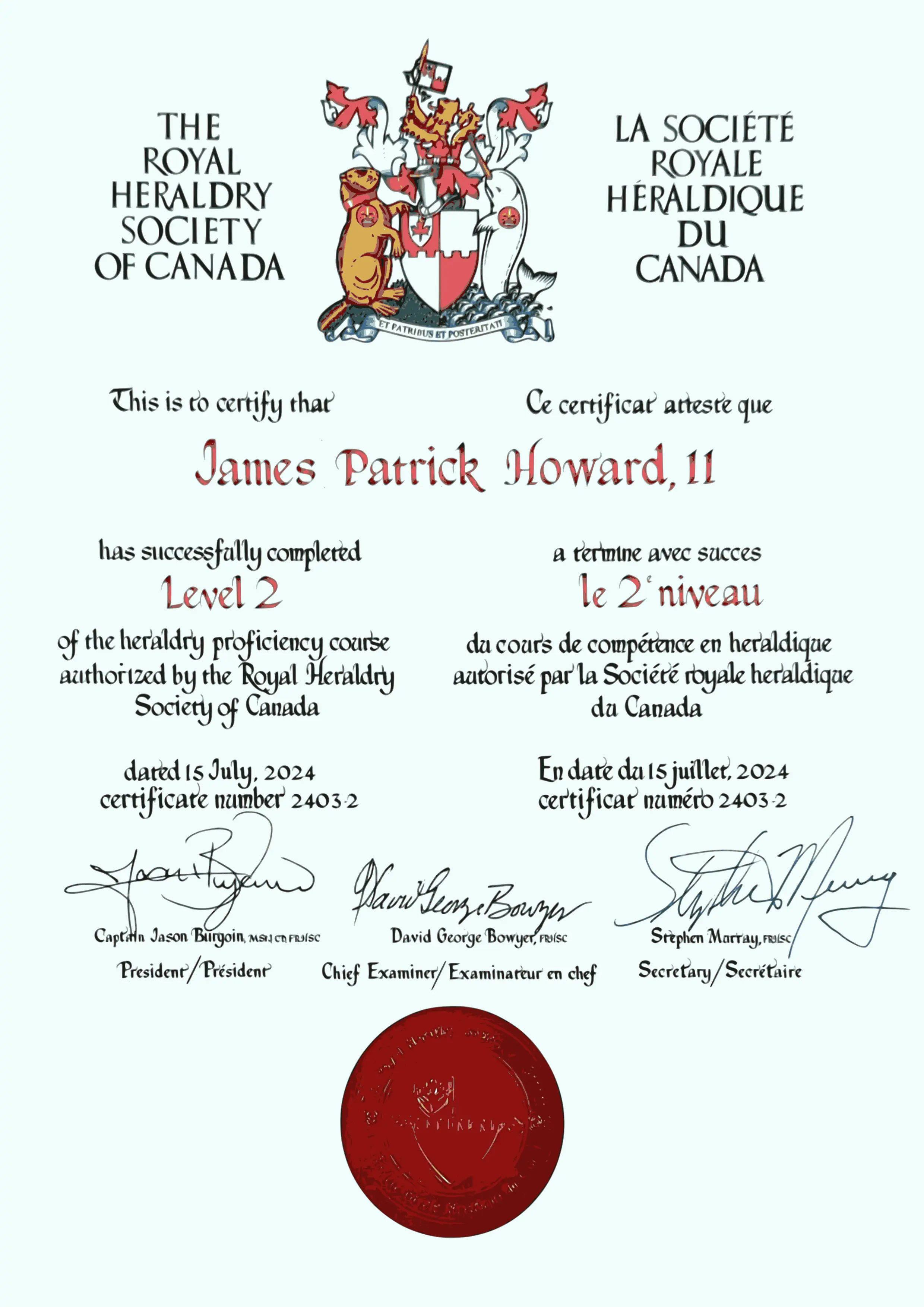Completed Level 2 of the RHSC's Heraldry Proficiency Program
Friday August 16, 2024


I recently completed Level 2 of the Royal Heraldry Society of Canada’s (RHSC) Heraldry Proficiency Program and received my certificate. This program is a structured course designed to deepen knowledge of heraldry in a systematic way, offering participants a solid foundation and progressively more advanced understanding of heraldic traditions and practices. Level 1: Laying the Groundwork
Level 1 of the program serves as an introduction to the fundamental concepts of heraldry. It covers the basics, including the history of heraldry, its evolution over time, and its significance across various cultures. This level places a strong emphasis on terminology—learning the language of heraldry is essential for understanding and discussing the subject accurately. Key terms such as “blazon,” “tincture,” “charge,” and “ordinary” are introduced, forming the basis for more advanced study.
The course also covers the basic rules of heraldic design, including the Law of Tincture, which governs the use of colors in heraldry. Participants are introduced to different types of shields, ordinaries, and sub-ordinaries, and learn how these elements are combined to create distinct coats of arms. Additionally, Level 1 touches on heraldic symbolism, providing insight into the meanings behind various symbols and colors used in heraldry.
With a solid foundation from Level 1, Level 2 delves deeper into the complexities of heraldic art and design. This level expands on the principles of heraldry, introducing more detailed rules for combining different elements within a coat of arms. It also includes a study of heraldic law, offering an overview of the legal aspects of heraldry, such as the rights to bear arms and the procedures for granting arms.
Participants in Level 2 explore the different forms of heraldic representation, including crests, badges_, and supporters, and learn how these elements are arranged to convey specific meanings. They also focus on heraldic art, with attention given to the various styles of rendering arms and the importance of maintaining consistency in design.
Additionally, Level 2 touches on the role of heraldic authorities, discussing their responsibilities in regulating and overseeing the use of heraldic symbols.
One of the highlights of completing each level is receiving the certificate, which is not just a document of achievement but also a piece of art. The certificate features beautiful hand-calligraphy, a testament to the tradition and craftsmanship that heraldry embodies. The attention to detail in the lettering and the overall design reflects the care and respect that the RHSC has for the art of heraldry. It’s a reminder of the skills and knowledge acquired through the program and a beautiful addition to any heraldic collection.
Having completed Level 2, I plan to continue through the program, working toward the Licentiate of the Royal Heraldry Society of Canada. This next step will involve even more advanced study and a deeper exploration of the rich traditions and practices of heraldry.
For those interested in heraldry, the RHSC’s Heraldry Proficiency Program offers a well-organized and comprehensive path to gaining knowledge in this fascinating field. Each level builds on the last, making it an excellent resource for both beginners and those looking to deepen their understanding of heraldry.